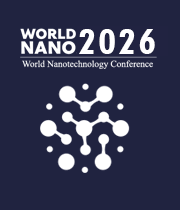Carbon Nanotubes
Carbon nanotubes are one of the most promising Nanobiotechnology developed in the 21st century. They are cylindrical nanostructures of carbon atoms with unique physical and chemical properties. The most common form of carbon nanotube is single-walled carbon nanotubes (SWCNTs) which are composed of one concentric layer of carbon atoms arranged in a hexagonal pattern. The walls of carbon nanotubes are typically between 0.7 and 2 nanometers in diameter, but can be up to 50 nanometers in diameter. Due to their unique structure, carbon nanotubes have a number of desirable properties. For example, they have extremely high strength and stiffness, making them useful in a variety of applications. They are also highly conductive, both thermally and electrically, making them well suited for use in electronic components. In addition, carbon nanotubes have excellent chemical stability and can be used in a wide range of chemical reactions. The surfaces of these nanotubes can be functionalized to allow for the attachment of various molecules, making them useful for a variety of applications such as drug delivery and sensing.

Harry Ruda
University of Toronto, Canada
Raman Singh
Monash University, Australia
Paulo Cesar De Morais
Catholic University of Brasilia, Brazil
Xiao Hong Nancy Xu
Old Dominion University, United States
S V A R Sastry
Harcourt Butler Technical University, India
Vinayak Adimule
Angadi Institute of Technology and Management, India



Title : Nanomaterial-based bio-lubricant additives for improved efficiency and environmental sustainability in automotive applications
S V A R Sastry, Harcourt Butler Technical University, India
Title : Harnessing the unique properties of engineered nanostructures for sensing
Harry Ruda, University of Toronto, Canada
Title : Circumventing challenges in developing CVD graphene on steels for extraordinary and durable corrosion resistance
Raman Singh, Monash University, Australia
Title : 40,000 implants in humans and no failure: The impact of nanomedicine
Thomas J Webster, Hebei University of Technology, China
Title : Evaluating cytotoxicity of metal-doped tin oxide nanoparticles
Paulo Cesar De Morais, Catholic University of Brasilia, Brazil
Title : Lipid nanoparticles formulations: From bench scale to industrial scale
Mohammad A Obeid, RAK Medical and Health Sciences University, United Arab Emirates